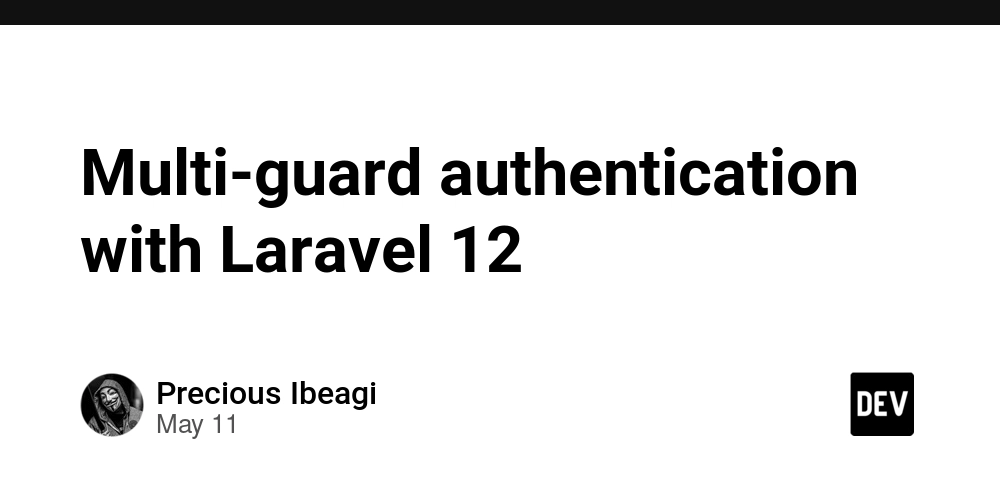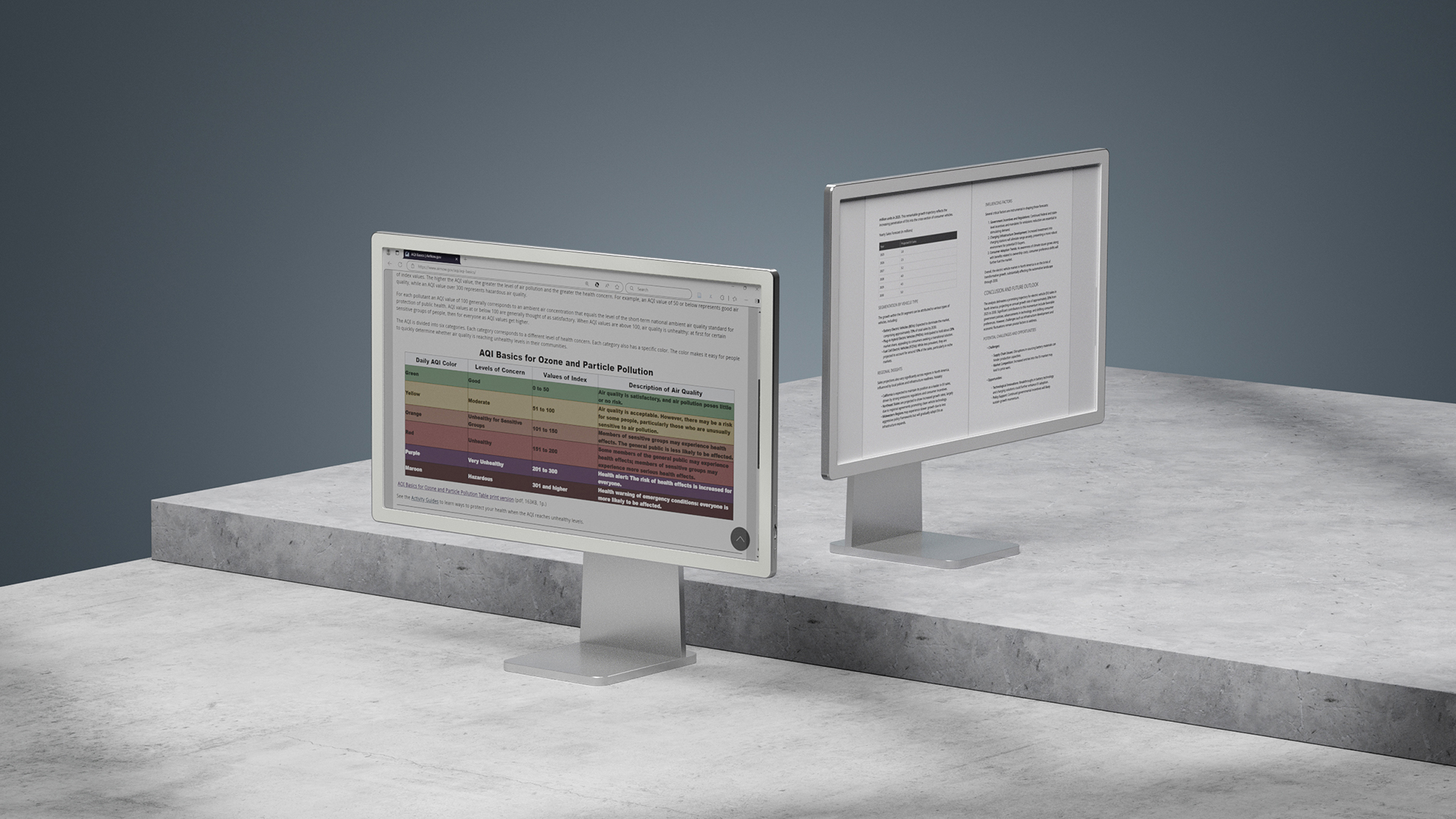Multi-guard authentication with Laravel 12
In this tutorial i will walk you through implementing multiguard authentication using laravel 12+. Below are the steps we will have to follow. Create the model and migration for both admin and users. Create the required guards. Define the routes and controllers. Configure the redirects for the guards. Logout Conclusion Creating the model We need to have the models we want to create. Make sure that the models extend from the Illuminate\Foundation\Auth\User class User model

In this tutorial i will walk you through implementing multiguard authentication using laravel 12+.
Below are the steps we will have to follow.
- Create the model and migration for both admin and users.
- Create the required guards.
- Define the routes and controllers.
- Configure the redirects for the guards.
- Logout
- Conclusion
Creating the model
We need to have the models we want to create. Make sure that the models extend from the Illuminate\Foundation\Auth\User class
User model
'datetime',
'password' => 'hashed',
];
}
}
Admin model
'datetime',
'password' => 'hashed',
];
}
}
Create the required guards
In config/auth.php, define the required guards. The default guard is web while we will define and extra one as admin. Also here we are adding a new admins provider pointing to the App\Models\Admin class
'guards' => [
'web' => [
'driver' => 'session',
'provider' => 'users',
],
'admin' => [
'driver' => 'session',
'provider' => 'admins',
],
],
'providers' => [
'users' => [
'driver' => 'eloquent',
'model' => env('AUTH_MODEL', App\Models\User::class),
],
'admins' => [
'driver' => 'eloquent',
'model' => App\Models\Admin::class,
],
],
Define the routes and controllers.
Next we define our routes. So here we have the the basic routes. You'll notice that we have the custom guard that we defined.
group(function () {
Route::get('login', [LoginController::class, 'loginForm'])->name('login');
Route::post('login', [LoginController::class, 'login'])->name('login-user');
});
Route::middleware('guest:admin')->group(function () {
Route::get('/admin/login', [AdminLoginController::class, 'loginForm'])->name('admin.login');
Route::post('/admin/login', [AdminLoginController::class, 'login'])->name('admin.login-admin');
});
Route::middleware('auth')->get('dashboard', DashboardController::class)->name('dashboard');
Route::middleware('auth:admin')->get('/admin/dashboard', AdminDashboardController::class)->name('admin.dashboard');
The LoginController
route('dashboard');
}
}
The AdminLoginController
login($admin);
return redirect()->route('admin.dashboard');
}
}
Configure the redirects for the guards
You'll notice that when you are not logged in and you try to access the /admin/dashboard as a guest you get redirected to /login instead of /admin/login. So how do we get redirected to the desired urls?
So for that we have to replace the auth and guest aliases in bootstrap/app.php.
So auth aliases the \Illuminate\Auth\Middleware\Authenticate' middleware while the guest aliases the\Illuminate\Auth\Middleware\RedirectIfAuthenticated' middleware.
To configure the redirects, we are going to create our own Authenticate and RedirectIfAuthenticated middleware.
php artisan make:middleware Authenticate
php artisan make:middleware RedirectIfAuthenticated
Now replace the aliases with these new middleware.
withRouting(
web: __DIR__ . '/../routes/web.php',
commands: __DIR__ . '/../routes/console.php',
health: '/up',
)
->withMiddleware(function (Middleware $middleware) {
$middleware->alias([
'guest' => RedirectIfAuthenticated::class,
'auth' => Authenticate::class,
]);
})
->withExceptions(function (Exceptions $exceptions) {
//
})->create();
Now for the RedirectIfAuthenticated middleware, in the handle method we just have to set the required destination route if the requesting guard is admin or web.
check()) {
switch ($guard) {
case 'admin':
return redirect()->route('admin.dashboard');
break;
default:
return redirect()->route('dashboard');
}
}
}
return $next($request);
}
}
Now for the for the Authenticate middleware it's a bit different. We have to modify the $redirectTo parameter of the AuthenticationException that is thrown when the unauthenticated method is called
Logout
To logout you just call the guards.
Auth::guard('admin')->logout();
Auth::guard('web')->logout();
Conclusion
And voilà. We now have redirects working as they should. You now have a working multi-guard authentication system. You can add as many models as you choose. You can access the code here.










































































































































































![[The AI Show Episode 146]: Rise of “AI-First” Companies, AI Job Disruption, GPT-4o Update Gets Rolled Back, How Big Consulting Firms Use AI, and Meta AI App](https://www.marketingaiinstitute.com/hubfs/ep%20146%20cover.png)




























































































































![[FREE EBOOKS] Offensive Security Using Python, Learn Computer Forensics — 2nd edition & Four More Best Selling Titles](https://www.javacodegeeks.com/wp-content/uploads/2012/12/jcg-logo.jpg)



![Ditching a Microsoft Job to Enter Startup Purgatory with Lonewolf Engineer Sam Crombie [Podcast #171]](https://cdn.hashnode.com/res/hashnode/image/upload/v1746753508177/0cd57f66-fdb0-4972-b285-1443a7db39fc.png?#)






























































































































































































































-xl.jpg)













![As Galaxy Watch prepares a major change, which smartwatch design to you prefer? [Poll]](https://i0.wp.com/9to5google.com/wp-content/uploads/sites/4/2024/07/Galaxy-Watch-Ultra-and-Apple-Watch-Ultra-1.jpg?resize=1200%2C628&quality=82&strip=all&ssl=1)













![Apple M4 iMac Drops to New All-Time Low Price of $1059 [Deal]](https://www.iclarified.com/images/news/97281/97281/97281-640.jpg)
![Beats Studio Buds + On Sale for $99.95 [Lowest Price Ever]](https://www.iclarified.com/images/news/96983/96983/96983-640.jpg)

![New iPad 11 (A16) On Sale for Just $277.78! [Lowest Price Ever]](https://www.iclarified.com/images/news/97273/97273/97273-640.jpg)







































![Apple's 11th Gen iPad Drops to New Low Price of $277.78 on Amazon [Updated]](https://images.macrumors.com/t/yQCVe42SNCzUyF04yj1XYLHG5FM=/2500x/article-new/2025/03/11th-gen-ipad-orange.jpeg)



![[Exclusive] Infinix GT DynaVue: a Prototype that could change everything!](https://www.gizchina.com/wp-content/uploads/images/2025/05/Screen-Shot-2025-05-10-at-16.07.40-PM-copy.png)
























































